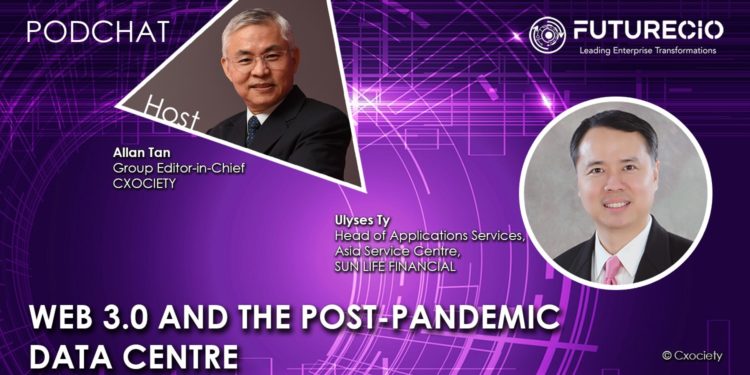* Editor's note: This article is co-produced by Allan Tan
In the article, What Is Web 3.0 & Why It Matters, Fabric Venture partners, Max Mersch and Richard Muirhead, wrote that whereas “Web 2.0 was driven by the advent of mobile, social and cloud, Web 3.0 is built largely on three new layers of technological innovation: edge computing, decentralised data networks and artificial intelligence.”
They also postulated that the shift to Web 3.0 is spreading the data centre out to the edge. “Large legacy data centres are being supplemented by a multitude of powerful computing resources spread across phones, computers, appliances, sensors and vehicles which are forecast to produce and consume 160 (!) times more data in 2025 as compared to 2010 (Ocean Protocol Research).”
Gartner analyst Avivah Litan says Web 3.0 will transform us from Web 2.0’s monetization via surveillance capitalism and advertising to monetization built directly into the protocol that is equally available to any connected user.
Ulyses Ty, head of Applications Services, Asia Service Centre at Sun Life Financial, acknowledges that Web 3.0 is still at its early stages. That said, he believes it’s a good time to get involved and help craft the future of the Internet, particularly as solutions are still maturing and being developed, and ideas are being formed.
We have seen a lot of interest in digital innovation or digital-led innovations in the last few years. How do you see Web 3.0 supporting calls for innovation that support the sustainability and resilience called by management?
Ulyses Ty: Sustainability may still be a question mark considering a lot of the challenges with the energy usage of crypto but for resiliency, having a decentralized network and infrastructure, and running on the edge increases resiliency significantly.
Looking at it from the position of the senior-level executive, why is Web 3.0 not yet here for senior management?
Ulyses Ty: It is an early stage for a lot of people with uncertainty on what needs to be compromised. What is not going to change is decentralization with Web 3.0. The board of directors and senior management can plan around the key tenets of Web 3.0 and start planning around the emerging technologies.
Where do you see are the low hanging use cases of Web 3.0 based on currently available technology?
Ulyses Ty: Marketing is an early adopter, and work from home would be a huge adopter in the driver of Web 3.0. It is still very early. The individual technologies have many different use cases, it is really when all these technologies start to come together and complement each other.
So how do you see security and data privacy evolving in a Web 3.0 environment?
Ulyses Ty: Web 3.0 is going to contribute immensely to security. There are still micro-challenges that need to be resolved, and with Web 3.0, it will further increase. Privacy, on the other hand, is interconnected with the digital world.
When we talk about digital identity and a single identity for each person, then you are talking about a more secure digital world. At the same time, however, you may be talking about a less private world as well.
How do you see the CIO and IT leadership helping to steer the integration of Web 3.0 into the organizations evolving use of IT?
Ulyses Ty: The CIO and IT leadership need to lead the discussion on Web 3.0 regardless of the state of digital transformation in the organization. The CIO can help demystify and have a common understanding, and a prototype would help in facilitating discussions and engagement with regard to Web 3.0.
How do you see Web 3.0 shaping both your industry and industries at large?
Ulyses Ty: The impact of Web 3.0 would be different depending on the industry. For example, the impact of Web 3.0 will be significantly larger compared to the impact of digital in the finance industry. Regulators will have a tempering impact to slow down this disruption which is important.
Click on the PodChat player to listen to the dialogue with Ty.
- What is your definition of Web 3.0?
- How do you see Web 3.0 supporting calls for innovations that support sustainability and resilience?
- Why is Web 3.0 not yet here (not sufficiently mature to draw serious discussion at the Board and C-suite level)?
- From your perspective, where do you see are the low-hanging use cases of Web 3.0 based on currently available technology?
- How do you see security and privacy evolving in Web 3.0?
- In all these developments, how do you see the CIO and IT leadership helping to steer the integration of Web 3.0 into the organisation’s evolving use of IT?
- Into 2022, how do you see Web 3.0 shaping the industry?





